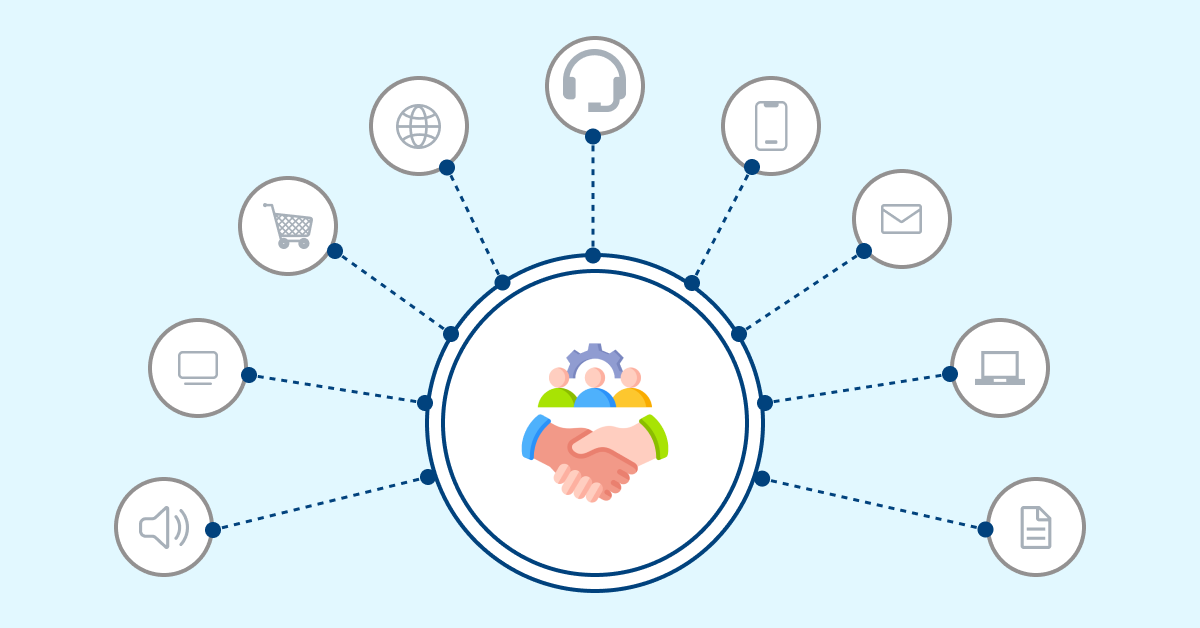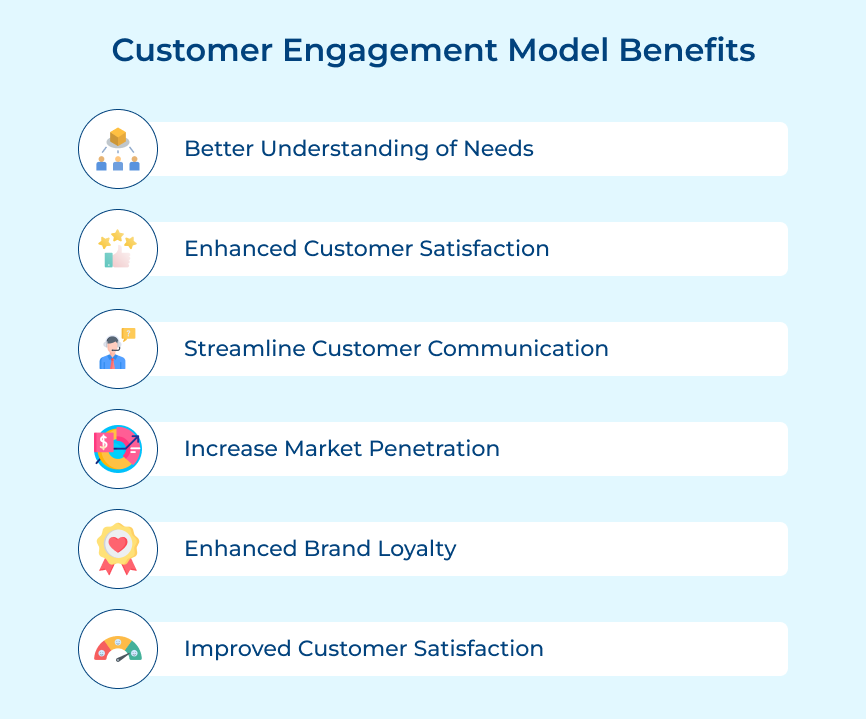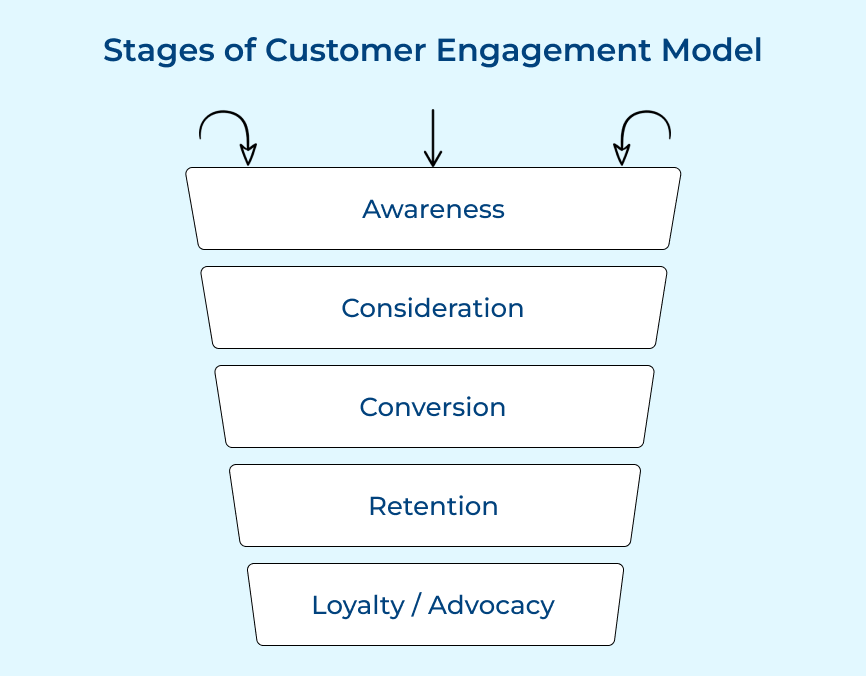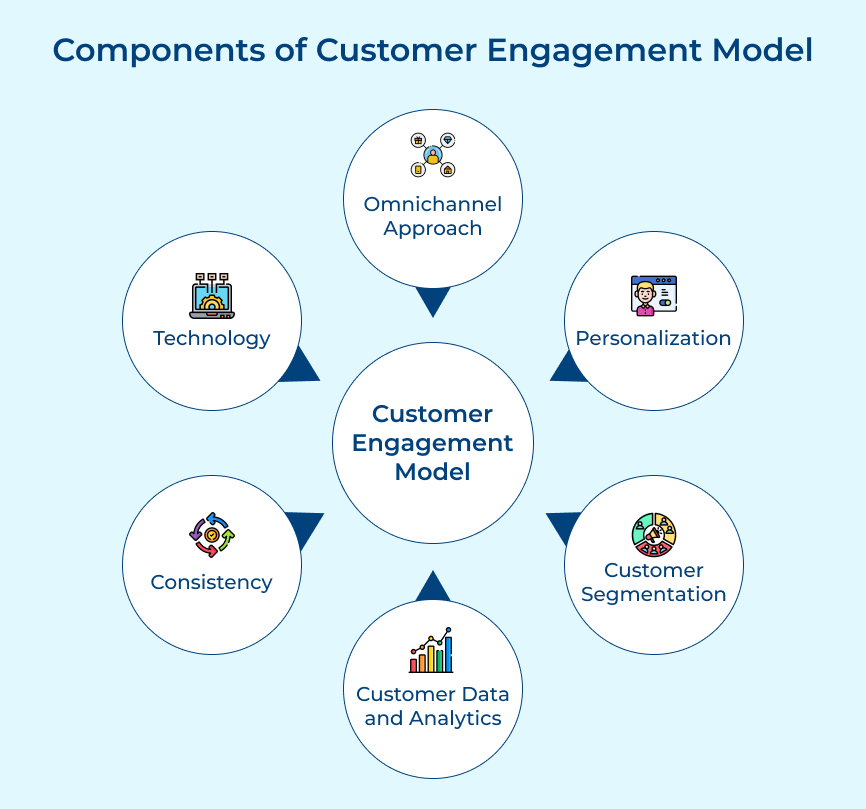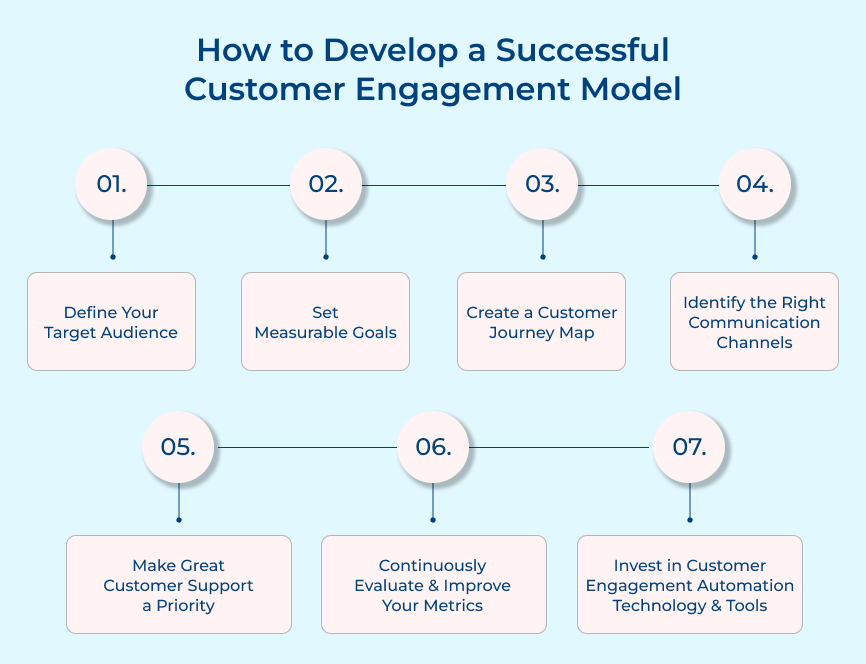1.Define Your Target Audience
Before you start creating a customer engagement model, it’s important to define who your target audience is. Are you targeting new customers or existing ones? Are there specific demographic or psychographic characteristics that you should consider? A whopping 82% of marketers say having high-quality data on their target audience is important to succeed.
Best Practices:
- Identify your target audience’s age group, interests, occupation, location, and more.
- Analyze their buying behaviors, preferences and purchase history.
- Use segmentation to personalize your marketing efforts toward customer needs.
2. Set Measurable Goals
Setting goals is key to tracking the success of your customer engagement strategy. For example, if you want to increase customer satisfaction by 10% in the next six months, make sure that goal is measurable and trackable so that you know if progress has been made towards achieving it.
Best Practices:
- Establish clear, quantifiable objectives to ensure customer satisfaction goals are met.
- Use data to track key performance indicators to measure the success of the model.
- Set up periodic check-ins with stakeholders to review and celebrate achievements.
3. Create a Customer Journey Map
Creating a customer journey map helps you anticipate how customers will interact with your brand across multiple touchpoints and channels throughout their buying cycle. The mapping exercise provides valuable insights into how you can engage customers more effectively. Businesses are known to save their service costs up to 15%-20% by utilizing technologies like customer journey maps.
Best Practices:
- A customer journey map outlines the customer experience at every stage of their interaction, providing all stakeholders with greater insight and understanding.
- Companies can easily identify pain points that customers have and develop strategies to better serve them over time.
- Understanding how customers interact with the brand allows businesses to create more targeted campaigns.
4. Identify The Right Communication Channels
Once you know who your target audience is and what type of communication vehicles would work best for them, it’s time for implementation! Make sure that all channels are integrated into one platform so that all online communication from your company looks seamless across different devices—desktop computers, mobile phones, tablets, etc.
Best Practices:
- Understand customer expectations by utilizing channel metrics like open rates, click-through rates, and response times.
- Use customer data to analyze customer behaviors across platforms in order to identify their preferred communication method.
- Leverage automation tools to deliver personalized content that reflects customers’ interests and preferences.
5. Make Great Customer Support A Priority
Great customer service should be a top priority for any business looking to create a successful engagement strategy. Put resources into training employees so they can answer customer questions quickly while still providing friendly service at all times. Investing in an always-on support system like live chat also makes it easier for customers to reach out without waiting long periods.
Best Practices:
- Investing in proactive customer service initiatives like chatbots and self-service help centers ensures customers are supported when needed.
- Enlisting company employees to participate in a customer feedback loop helps communicate directly with those who use the product or services.
- Providing simple, user-friendly support to existing customers helps streamline their overall success with the product or service.
6. Continuously Evaluate & Improve Your Metrics
Collecting data on the current engagement levels is important to constantly evaluate and improve upon the performance metrics over time. Whether it’s response rates from emails sent out or click-through rates from ads placed across multiple channels the data collected will allow organizations to understand what’s working and what isn’t.
Best Practices:
- Regularly review customer engagement metrics such as response rates, conversion rate and customer lifetime value.
- Identify opportunities to improve across various marketing channels and campaigns.
- Take actionable steps to adjust your strategy and make necessary changes.
7. Invest In Customer Engagement Automation Technology & Tools
There are plenty of tools available that enable automated digital communication between brands and consumers. Investing in the technologies will not only help boost efficiency but also provide consistency in meeting standards set forth by brand guidelines. Some automation solutions include chatbot tools, customer communication platforms and self-service solutions such as knowledge base.
Best Practices:
- Automation technology allows organizations to respond to customer inquiries quickly and effectively.
- Automated customer engagement captures and stores data around customers’ buying habits, making it easier to create highly tailored campaigns that help build strong relationships.
- Automation makes sure valuable conversations with customers are not missed.
Fast Track Your Journey with the Right Consumer Engagement Model
Having an effective customer engagement model in place is not just a guideline, but rather a key factor that drives success. Companies need to focus on gathering insights about customers’ behavior and preferences to build methods based on these data-driven insights that respond specifically to customers’ needs.
Such hybrid approaches need to become part of a long-term strategy but most importantly they must be integrated in delivering the best possible service while consistently engaging with customers in the right way at the right time. Only then will businesses have the technology tools and necessary processes in place for building strong relationships with their customers that result in sustained brand loyalty.
